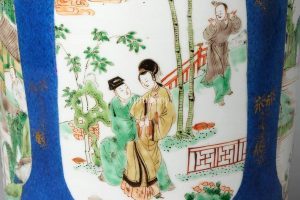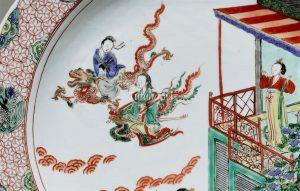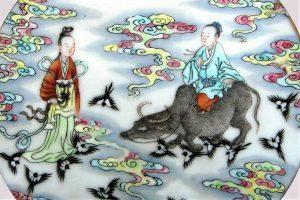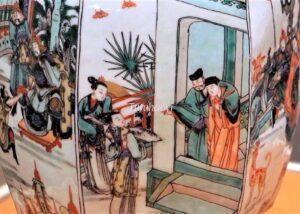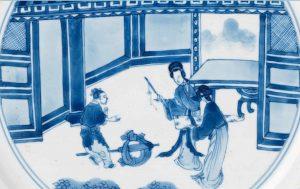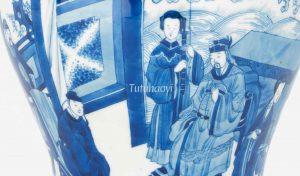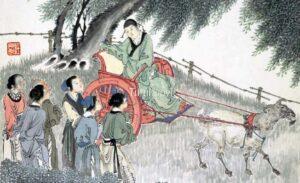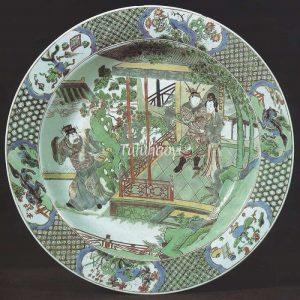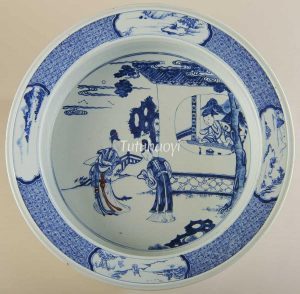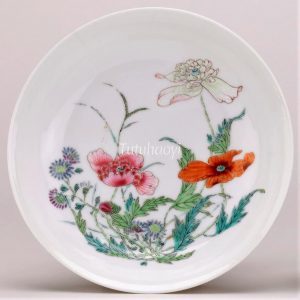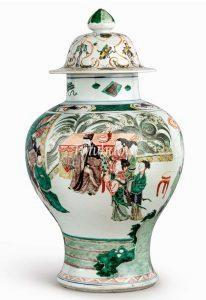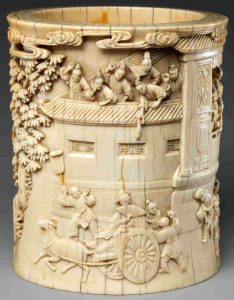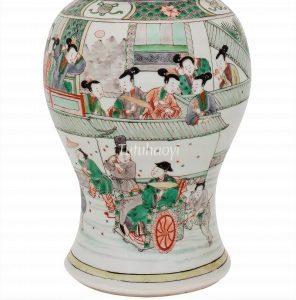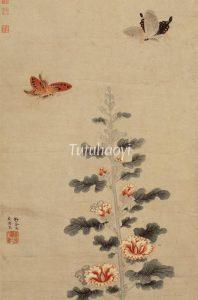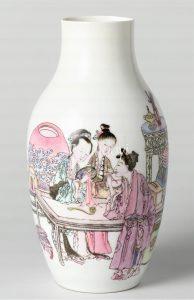Showing Results Containing
The Chinese Valentine’s Day, Qixi Festival (七夕节), is just around the corner. It falls on the seventh day of the seventh month of the traditional Chinese year. Dr Yibin Ni has conducted comprehensive research on this topic and has written an articl...
The story scene comes from a marvel play Legend of the Jade Hairpin, which is not to be confused with the scene in Romance of the Western Chamber. Read the following article to find out details of the story and how this figural scene is depicted.<...
Correctly identifying figures is crucial to deciphering an obscure story scene. Looking at this featured image, for example, some may think that the two figures in non-specific attires on a dragon and a phoenix are anonymous Daoist immortals. But ...
On the seventh day of the seventh month of the lunar Chinese year, young men and women will celebrate their traditional ‘Valentine’s Day’, Qixi Festival (七夕节). The custom can be traced back to an ancient story.
The Peony Pavilion is a famous play written by Tang Xianzu in Ming Dynasty. There are very few figural paintings depicting this play on Kangxi famille verte porcelain. Dr Yibin Ni first identified the figures and the scene on a porcelain dish in t...
This is a republication of Dr Yibin Ni’s article written in Chinese “明末清初瓷器上张生的‘凝视’和莺莺的挑战”(Gaze from Scholar Zhang and the response from Lady Cui Yingying: a discussion of figural depiction on porcelains from Late Ming to Early Qing dynasty)...
European descriptions of porcelain paintings that have story scenes tend to describe ‘figures and surroundings’, rather than identifying them. Thus, a large part of those beautiful stories intended by pot painters was lost in the description. Here...
Have you wondered why the same story scenes were painted differently on Chinese artworks? How was it painted to present women falling in love on Chinese antique porcelains? Read on to see what Dr Yibin Ni has to say with his analysis.
Do you wonder why there is a goat drawing a carriage, rather than a horse, on traditional Chinese art pictures? Why are there so many people watching someone in a chariot? What is the story behind it? Here is what Dr Yibin Ni has to tell you.
This scene is from one of the most famous Chinese dramatic works, Romance of the Western Chamber 西厢记, which was written by the Yuan playwright Wang Shifu (王实甫 12...
Dong Zhuo (董卓 d. 192), a tyrannic warlord rising to power at the end of the Han dynasty, caused great concern among courtiers and officials. Wang Yun (王允), the Minister Over the Masses (司徒 Situ), was entrusted to figure out a plan to bring him down. Dong Zhuo was particularly powerful because he managed to ally ...
Legend of the Jade Hairpin (Yu Zan Ji 玉簪记) is a Ming-dynasty ‘marvel play’ which was the major drama genre of the time. The play, consisting of thirty-three scenes, was written by Gao Lian (高濂 fl. 1573-1581) around 1580 and remained to be a popular classic for the following three hundred years. It is a Shakespea...
Wang Xizhi (王羲之, 303–361) is often said to be the greatest calligrapher in Chinese history. He has his biography in the official history of Jin 晋 dynasty (c. 265–420). One anecdote in it concerns his fame for his calligraphic skill and his love of geese. A Daoist priest in the neighbourhood raised a handsome flock of gee...
This is Scene Five of Act Two of the Chinese classic popular drama Romance of the Western Chamber (西厢记 Xixiang ji).
At a family dinner party, Zhang Junrui...
The flower of the annual herbaceous species Papaver rhoeas has many different names in the West, such as common poppy, corn poppy, corn rose, field poppy, Flanders poppy, and red poppy. One of its names in China is yumeiren (虞美人), literally meaning ‘Yu the Beauty’. It was named after Yu Ji (虞姬), Consort...
Duke Mu of the Qin State (秦穆公, died 621 BCE) was one of the so-called Five Hegemons (五霸 wuba) in the Spring and Autumn Period (770 – 476 BCE) (春秋 chunqiu). He had a daughter named ‘Nongyu (弄玉, meaning Playing Jade)’, who was a talented musician excelling at playing the sheng (笙 mouthorgan...
The seventh day of the seventh month of the traditional Chinese year is the Chinese ‘Valentine’s Day’, Qixi Festival (七夕节). The custom can be traced back to an ancient story about a weaver girl and a cowherd:
Once upon a time, one of the daughters of the Lord of the Heaven lived on the east side of the Mi...
‘True love conquers all’ is the theme of the Peony Pavilion (牡丹亭 Mudan Ting), a musical play of fifty-five scenes written by Tang Xianzu (汤显祖, 1550–1616) in Ming...
Romance of the Western Chamber (西厢记 Xixiang ji) is the most popular love comedy in late imperial China. In the story, Scholar Zhang (张生 Zhang Junrui) falls in love with a beautiful lady named Cui Yingying (崔莺莺), who happens to be stranded in a monastery with her widowed mother and, after plenty of twist...
With strategic plans to restore the war-torn country back to order, the talented scholar Li Jing (李靖) was paying a visit to the powerful Lord Yang Su (杨素), who enjoyed luxurious ways of living and female company around him. To Li Jing’s disappointment, Lord Yang did not take his plans seriously. However, Red Fly Whisk (红...
Wei Jie (卫玠, 286-312) was admired as a handsome “jade man’ when he appeared in his signature goat-drawn carriage in town. Wei Jie shone like a piece of gleaming diamond whichever company he was in.
On 17th century porcelain, the goat-drawn carriage and the Continue Reading
The second half of the third century and the beginning of the fourth century saw a couple of most handsome men in the history of China. For example, Pan An 潘安 (247–300) was exceptionally cute and adorable when he was an adolescent. Women who spotted him in the street would circle around him and throw fruits into his char...
A scholar official in Song dynasty Sima You (司马槱) dreamed of a beautiful girl presenting him the first half of a song, which he later developed into a full version called Huangjinlv (黄金缕). The girl was none other than a famous courtesan Su Xiaoxiao (苏小小) who lived by the Qiantang River and was in the local high ...
The primary symbolic meaning of the hollyhock (shu kui 蜀葵) is the good wish for longevity. The secondary implication is based on the perennially sun-facing nature of the hollyhock. In the old days, people compared their emperor or statesman to the sun and themselves to the hollyhock, implying that they would alw...
Zhang Chang (张敞, ?- 48 BCE) and his wife grew up in the same village. When they were both children, Zhang Chang once threw a pebble at his future wife and, unfortunately, the scratch left a scar on one of her eyebrows. Later, Zhang became a civil servant and learned that the girl he once hit with a pebble was unmarried b...

